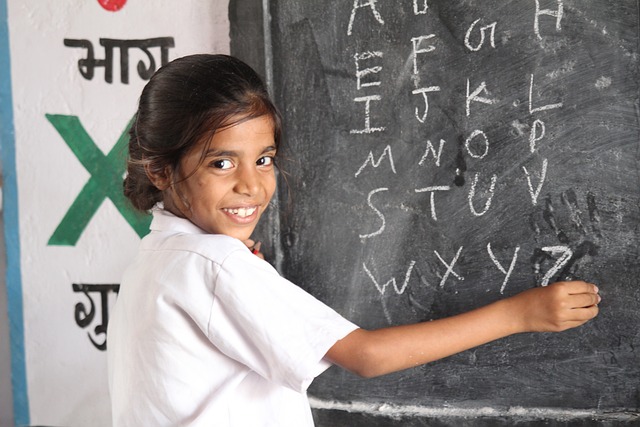高考英語配套教學課件《Unit 1 The world of our senses》專題語法攻略 形容詞和副詞 譯林版必修3

一、形容詞、副詞的作用與位置
形容詞是用來修飾名詞的,常放在名詞前作定語,
或放在系動詞后作表語。而副詞則用來修飾形容詞、
動詞,其他副詞或者句子,一般位于形容詞之前,
動詞之后或句子之首。以下屬幾種特殊情況,需牢記: 1.形容詞短語作定語,定語后置。
a language difficult to master, a leaning tower about 180
feet high 2.表語形容詞(afraid、alike、alone、asleep、awake、alive
等)作定語,定語后置。如a man alive。有些表身體健康
狀況的形容詞如well、faint、ill,只作表語。sick既可作
表語又可作定語,ill如作定語則意為“bad”。 3.形容詞用作定語,修飾由不定代詞one、no、any、
some和every構成的復合詞如anything、something等時,
通常后置。
I have something important to tell you.
我有要事相告。 4.else常用作疑問代詞和不定代詞的后置定語。例如:
what else,who else。 5.enough修飾名詞前置或后置均可,修飾形容詞、副詞時,
需后置。 6.幾個副詞并列作狀語時,其順序較靈活,但一般是:方
式→地點→時間。
We had a good time together outdoors last Sunday.
我們上星期天在戶外玩得很愉快。 7.頻度副詞如often、always、usually等置于be動詞后,行
為動詞前。 8.副詞作定語,定語后置。
The person there is waiting for you.
那邊的那個人在等你。 9.幾個并列的形容詞作定語,其語序通常為:限定詞+ 描
繪性形容詞 + size(大小)+ shape(形狀)+
color(顏色)+
origin(國籍、來源)+ material(材料)+ purpose(用途)+
名詞。
a
beautiful white Japanese military jeep
一輛漂亮的白色的日本軍用吉普車 10.以-ly結尾的詞性辨析。 (1)下列單詞以-ly結尾,常用作形容詞:lively、lonely、
lovely、deadly、friendly、ugly、silly、likely、brotherly、
timely等。 (2)表原意(無-ly)和引申意(有-ly)的副詞: deep深地 deeply深入地 wide寬廣地 widely廣泛地 high高;高高地 highly高度地 low位置低地 lowly地位卑微地 (3)有無-ly意義大不相同的副詞: pretty相當地
be pretty certain that… prettily漂亮地
be prettily dressed close近地
Don’t sit close.
closely密切地
Watch closely!
late晚、遲
arrive late, come late lately最近
I haven’t seen him lately(recently).
二、復合形容詞的構成 1.形容詞 + 名詞 + ed
kind-hearted好心的,white-haired白發的 2.形容詞 + 形容詞
red-hot熾熱的,dark-blue深藍的 3.形容詞 + 現在分詞
good-looking好看的,easy-going隨和的 4.副詞 + 現在分詞
hard-working勤勞的,fast-moving快速轉動的 5.副詞 + 過去分詞
hard-won得來不易的,newly-built新建的 6.名詞 + 形容詞
life-long終生的,world-famous世界聞名的 7.名詞 + 現在分詞
peace-loving愛好和平的,fun-loving愛開玩笑的 8.名詞 + 過去分詞
snow-covered白雪覆蓋的,hand-made手工的 9.數詞 + 名詞 + ed
four-storeyed 4層樓的,three-legged 3條腿的 10.數詞 + 名詞(名詞用單數)
ten-year 10年的,two-man兩人的 三、形容詞和副詞的比較等級 1.原級的用法。表示雙方在程度、性質、特征等方面相等
時,用“as +形容詞/副詞原級+ as”的結構;表示雙方
不相等時,用“not so(as) + 形容詞/副詞原級+ as”的
結構。
This building looks not so (as)high as that one.
這幢樓看起來不如那幢高。
Miss Xu speaks English as fluently as you.
徐小姐英語說得和你一樣流利。 2.比較級的用法。 (1)雙方比較,表示一方超過另一方時,用“比較級 +
than”的結構表示。
Our house is bigger than yours.
我們的房子比你們的大。 (2)表示一方不及另一方時,用“less + 原級 + than”的結
構表示。
This room is less beautiful than that one.
這個房間不如那個房間漂亮。 (3)表示一方超過另一方的程度或數量時,可在比較級前加
表示程度的狀語,如even、a lot、a bit、a little、still、
much、far、yet等修飾。
He works even harder than before.
他工作比以前努力多了。 (4)表示一方隨另一方的程度而變化時,用“the + 比較級(
主語 + 謂語),the + 比較級(主語 + 謂語)”的結構,意
為“越……,就越……”。
The harder he works, the happier he feels.
他工作越努力就感覺越幸福。 (5)不與其他事物相比,表示本身程度的改變時,用“比較
級 + and + 比較級”的結構。
The weather is getting warmer and warmer.
天氣變得越來越暖和了。 (6)在比較從句中為了避免重復,我們通常用that(those)、
one(ones)代替前面出現的名詞。that指物,one既可指
人又可指物。that可代替可數名詞單數和不可數名詞,
而one只能代替可數名詞。
A box made of steel is stronger than one made of wood.
鋼制的箱子比木制的堅固。 (7)倍數表達法。
①A is three(four, etc.)times the size(height, length
etc.)of B.
The new building is four times the size(the height)of the
old one.這座新樓比那座舊樓大三倍(高三倍)。
②A is three(four, etc.)times as big(high, long, etc.)as B.
This room is three times as large as that one.
這個房間是那個房間的三倍大。
③A is three (four, etc.)times bigger(higher, longer,
etc.)than B.
Your school is three times bigger than ours.
你們的學校比我們的學校大三倍。 [注意] 用times 表倍數通常用于三倍以上,兩倍可以用twice或double。
3.最高級的用法。 (1)三者或三者以上相比,表示最高程度時,用“the + 最
高級”的結構表示。這種句式一般常有表示比較范圍的
介詞短語。
She is the youngest of the family.
她是家中最小的。 (2)最高級可被序數詞以及much、by far、nearly、almost、
by no means、not quite、not really、nothing like等詞語
所修飾。
This hat is by no means the biggest.
這頂帽子決不是最大的。 (3)表示“最高程度”的形容詞,如excellent、extreme、
perfect等,沒有比較級和最高級。 (4)形容詞最高級修飾作表語或介詞賓語的名詞、代詞時,
被修飾的詞往往省略。
She is the tallest(girl) in her class.
她是班上最高的女孩子。 4.形容詞和副詞前面使用冠詞的情況。 (1)形容詞最高級前有時加不定冠詞,或不加冠詞,不表
比較,表示“非常”。
The film is most interesting.(most=very)
這部電影非常有趣。 (2)表示兩者間“較……的一個”比較級前加the。
Who is the older of the two boys?
誰是這兩個男孩中較大的一個? (3)有些形容詞前加the 成為名詞。如the poor、the rich 等。 5.由as / so組成的形容詞或副詞短語。 (1)as much as + 不可數名詞 “(數量)多達” (2)as many as + 可數名詞 “(數量)多達” (3)as far as遠到;就……而言(論)
As far as I know,he has been there before.
就我所知,他以前去過那里。 (4)may (might, could)as well不妨、不如
Then you might as well stay with us here.
那么你不妨和我們一起呆在這兒。 (5)as... as one can be到了最……的程度,極其
They are as unreliable as they can be.他們極其不可信。 (6)as...as one can盡某人所能
He began to run, as fast as he could.
他開始盡可能快地跑。 (7)as ... as possible盡可能
Just get them to finish up as soon as possible.
讓他們盡可能地早點完成。 6.和more有關的詞組。 (1)more B than A=less A than B與其說A不如說B。
He is more lazy than slow at his work.
=He is less slow than lazy at his work.
他工作時,與其說是反應慢不如說是懶。 (2)no more...than...與……一樣……,不比……多。
The officials could see no more than the Emperor.
官員們看到的和皇帝一樣多。
no less...than...與……一樣……,不比……少。
He is no less diligent than you.他和你一樣勤勉。 (3)more than+從句,表示超出某人的力量、知識等的
范圍。
That's more than I can do.這是我所做不了的。
more than+形容詞表示“非常”。
She is more than kind to us all.
她對我們所有的人非常熱心。
一、形容詞、副詞的作用與位置
形容詞是用來修飾名詞的,常放在名詞前作定語,
或放在系動詞后作表語。而副詞則用來修飾形容詞、
動詞,其他副詞或者句子,一般位于形容詞之前,
動詞之后或句子之首。以下屬幾種特殊情況,需牢記: 1.形容詞短語作定語,定語后置。
a language difficult to master, a leaning tower about 180
feet high 2.表語形容詞(afraid、alike、alone、asleep、awake、alive
等)作定語,定語后置。如a man alive。有些表身體健康
狀況的形容詞如well、faint、ill,只作表語。sick既可作
表語又可作定語,ill如作定語則意為“bad”。 3.形容詞用作定語,修飾由不定代詞one、no、any、
some和every構成的復合詞如anything、something等時,
通常后置。
I have something important to tell you.
我有要事相告。 4.else常用作疑問代詞和不定代詞的后置定語。例如:
what else,who else。 5.enough修飾名詞前置或后置均可,修飾形容詞、副詞時,
需后置。 6.幾個副詞并列作狀語時,其順序較靈活,但一般是:方
式→地點→時間。
We had a good time together outdoors last Sunday.
我們上星期天在戶外玩得很愉快。 7.頻度副詞如often、always、usually等置于be動詞后,行
為動詞前。 8.副詞作定語,定語后置。
The person there is waiting for you.
那邊的那個人在等你。 9.幾個并列的形容詞作定語,其語序通常為:限定詞+ 描
繪性形容詞 + size(大小)+ shape(形狀)+
color(顏色)+
origin(國籍、來源)+ material(材料)+ purpose(用途)+
名詞。
a
beautiful white Japanese military jeep
一輛漂亮的白色的日本軍用吉普車 10.以-ly結尾的詞性辨析。 (1)下列單詞以-ly結尾,常用作形容詞:lively、lonely、
lovely、deadly、friendly、ugly、silly、likely、brotherly、
timely等。 (2)表原意(無-ly)和引申意(有-ly)的副詞: deep深地 deeply深入地 wide寬廣地 widely廣泛地 high高;高高地 highly高度地 low位置低地 lowly地位卑微地 (3)有無-ly意義大不相同的副詞: pretty相當地
be pretty certain that… prettily漂亮地
be prettily dressed close近地
Don’t sit close.
closely密切地
Watch closely!
late晚、遲
arrive late, come late lately最近
I haven’t seen him lately(recently).
二、復合形容詞的構成 1.形容詞 + 名詞 + ed
kind-hearted好心的,white-haired白發的 2.形容詞 + 形容詞
red-hot熾熱的,dark-blue深藍的 3.形容詞 + 現在分詞
good-looking好看的,easy-going隨和的 4.副詞 + 現在分詞
hard-working勤勞的,fast-moving快速轉動的 5.副詞 + 過去分詞
hard-won得來不易的,newly-built新建的 6.名詞 + 形容詞
life-long終生的,world-famous世界聞名的 7.名詞 + 現在分詞
peace-loving愛好和平的,fun-loving愛開玩笑的 8.名詞 + 過去分詞
snow-covered白雪覆蓋的,hand-made手工的 9.數詞 + 名詞 + ed
four-storeyed 4層樓的,three-legged 3條腿的 10.數詞 + 名詞(名詞用單數)
ten-year 10年的,two-man兩人的 三、形容詞和副詞的比較等級 1.原級的用法。表示雙方在程度、性質、特征等方面相等
時,用“as +形容詞/副詞原級+ as”的結構;表示雙方
不相等時,用“not so(as) + 形容詞/副詞原級+ as”的
結構。
This building looks not so (as)high as that one.
這幢樓看起來不如那幢高。
Miss Xu speaks English as fluently as you.
徐小姐英語說得和你一樣流利。 2.比較級的用法。 (1)雙方比較,表示一方超過另一方時,用“比較級 +
than”的結構表示。
Our house is bigger than yours.
我們的房子比你們的大。 (2)表示一方不及另一方時,用“less + 原級 + than”的結
構表示。
This room is less beautiful than that one.
這個房間不如那個房間漂亮。 (3)表示一方超過另一方的程度或數量時,可在比較級前加
表示程度的狀語,如even、a lot、a bit、a little、still、
much、far、yet等修飾。
He works even harder than before.
他工作比以前努力多了。 (4)表示一方隨另一方的程度而變化時,用“the + 比較級(
主語 + 謂語),the + 比較級(主語 + 謂語)”的結構,意
為“越……,就越……”。
The harder he works, the happier he feels.
他工作越努力就感覺越幸福。 (5)不與其他事物相比,表示本身程度的改變時,用“比較
級 + and + 比較級”的結構。
The weather is getting warmer and warmer.
天氣變得越來越暖和了。 (6)在比較從句中為了避免重復,我們通常用that(those)、
one(ones)代替前面出現的名詞。that指物,one既可指
人又可指物。that可代替可數名詞單數和不可數名詞,
而one只能代替可數名詞。
A box made of steel is stronger than one made of wood.
鋼制的箱子比木制的堅固。 (7)倍數表達法。
①A is three(four, etc.)times the size(height, length
etc.)of B.
The new building is four times the size(the height)of the
old one.這座新樓比那座舊樓大三倍(高三倍)。
②A is three(four, etc.)times as big(high, long, etc.)as B.
This room is three times as large as that one.
這個房間是那個房間的三倍大。
③A is three (four, etc.)times bigger(higher, longer,
etc.)than B.
Your school is three times bigger than ours.
你們的學校比我們的學校大三倍。 [注意] 用times 表倍數通常用于三倍以上,兩倍可以用twice或double。
3.最高級的用法。 (1)三者或三者以上相比,表示最高程度時,用“the + 最
高級”的結構表示。這種句式一般常有表示比較范圍的
介詞短語。
She is the youngest of the family.
她是家中最小的。 (2)最高級可被序數詞以及much、by far、nearly、almost、
by no means、not quite、not really、nothing like等詞語
所修飾。
This hat is by no means the biggest.
這頂帽子決不是最大的。 (3)表示“最高程度”的形容詞,如excellent、extreme、
perfect等,沒有比較級和最高級。 (4)形容詞最高級修飾作表語或介詞賓語的名詞、代詞時,
被修飾的詞往往省略。
She is the tallest(girl) in her class.
她是班上最高的女孩子。 4.形容詞和副詞前面使用冠詞的情況。 (1)形容詞最高級前有時加不定冠詞,或不加冠詞,不表
比較,表示“非常”。
The film is most interesting.(most=very)
這部電影非常有趣。 (2)表示兩者間“較……的一個”比較級前加the。
Who is the older of the two boys?
誰是這兩個男孩中較大的一個? (3)有些形容詞前加the 成為名詞。如the poor、the rich 等。 5.由as / so組成的形容詞或副詞短語。 (1)as much as + 不可數名詞 “(數量)多達” (2)as many as + 可數名詞 “(數量)多達” (3)as far as遠到;就……而言(論)
As far as I know,he has been there before.
就我所知,他以前去過那里。 (4)may (might, could)as well不妨、不如
Then you might as well stay with us here.
那么你不妨和我們一起呆在這兒。 (5)as... as one can be到了最……的程度,極其
They are as unreliable as they can be.他們極其不可信。 (6)as...as one can盡某人所能
He began to run, as fast as he could.
他開始盡可能快地跑。 (7)as ... as possible盡可能
Just get them to finish up as soon as possible.
讓他們盡可能地早點完成。 6.和more有關的詞組。 (1)more B than A=less A than B與其說A不如說B。
He is more lazy than slow at his work.
=He is less slow than lazy at his work.
他工作時,與其說是反應慢不如說是懶。 (2)no more...than...與……一樣……,不比……多。
The officials could see no more than the Emperor.
官員們看到的和皇帝一樣多。
no less...than...與……一樣……,不比……少。
He is no less diligent than you.他和你一樣勤勉。 (3)more than+從句,表示超出某人的力量、知識等的
范圍。
That's more than I can do.這是我所做不了的。
more than+形容詞表示“非常”。
She is more than kind to us all.
她對我們所有的人非常熱心。









